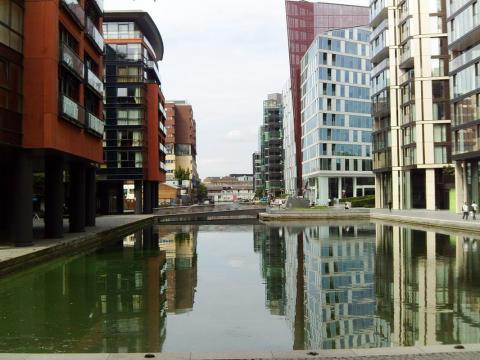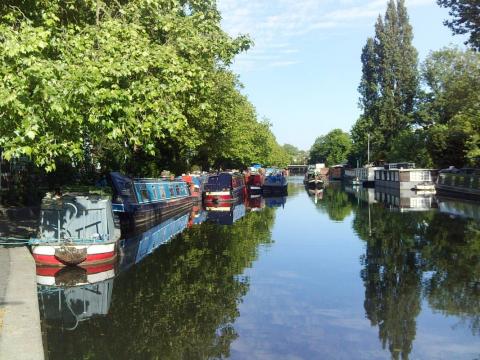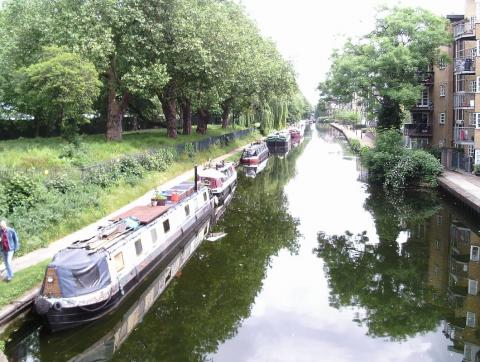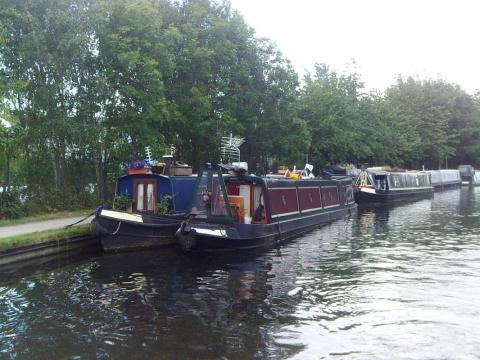Lack of London facilities unites IWA and Bargee Travellers against C&RT inactivity
January 2017 - By Peter Underwood
A survey conducted by the Canal & River Trust into London's boaters has brought together boaters organisations in unprecedented alliance – all calling on the charity to get on with providing more facilities and moorings in the capital.
C&RT claims the research 'for the first time shows just how many people are making their homes on boats in the capital'.However boaters say they have been telling the charity about the problems for years.The National Barge Travellers Association (NBTA) issued a statement saying: “For many years, the Canal & River Trust, and British Waterways before them, have been frustratingly unhelpful when it comes to the resources on which boaters depend.
“Today, there is no where near the same number of facilities that there used to be. C&RT have known for years that the number of boats in London has been increasing, yet they have still continued to close facilities and failed to provide adequate alternatives.
“We fully understand why the results of C&RT's survey show that boater's main requirements are to have access to more facilities and spaces to moor. We have seen many places that were once moorable, become unusable, such as where concrete has replaced grass.”
In what some might see as an unholy alliance, The Inland Waterways Association is also calling on C&RT to speed up the introduction of more facilities, including moorings, on London’s waterways although there is also a call for the Trust to warn off potential London liveaboards.
Its statement says: “IWA believes that facilities for boaters in London are hopelessly inadequate to meet spiralling demand from both prospective residents and visitors.
“For instance in central London – TfL’s Zones 1&2 – there are only seven public water points, five sewage and five refuse disposal facilities to serve all of London’s resident and visiting boaters. In addition, moorings are also seriously overcrowded, with boats frequently moored three abreast, presenting potentially significant risks to occupants in the event of fire.”
Paul Strudwick, chairman of IWA’s London Region, said: “We can readily understand why more and more people struggling with the London housing ladder are wondering if a boat is a viable and affordable option, but we would urge them to properly assess if it will work for their personal circumstances, as the restrictions of living aboard a boat full time mean that sometimes it’s no bed of roses.”
The Trust acknowledges that house prices across London remain unreachable for many and hundreds of people have taken to the water as boats are perceived as more achievable. It goes on to claim that the differing needs of liveaboard boaters are placing 'unprecedented pressure on the waterways’ infrastructure'.
Matthew Symonds, boating strategy & engagement manager at Canal & River Trust, said: “London’s waterways are busier than ever before and this survey shows that they are providing a place to live for hundreds of people.
“We’ve done this research so that we can work together with local authorities, developers and boaters themselves to make sure that their needs are met.”
The survey shows a snapshot of London’s boaters
· 769 boaters – 58% of the total respondents – describe their boat as their primary residence, with a further 156 saying the boat is either a second or temporary home.
· 50% have been living on boats on London’s waterways for three years of less.
· 50% cite financial reasons as motivation for living on a boat; but an overwhelming 82% are attracted by the waterway environment (boats, wildlife, tranquillity etc).
· 41% of those living on boats are under 35 years old.
· 43% of those living on boats live alone, with 42% living as part of a cohabiting couple.
· 70% own their boats outright.
558 surveys were completed by boats with a home mooring – somewhere a boat can be kept all the time – while 486 surveys were completed by boats without a home mooring.
· The top five improvements people want to see are: more mooring places; more mooring rings; water points; more Elsan (toilet emptying) facilities; more dredging.
· 45% would have an interest in securing a permanent mooring if available.
· The most important qualities in a mooring (other than price) are: somewhere people feel increasingly personally safe; good services nearby (sewage and rubbish); public transport nearby.
Matthew Symonds continues: “If you live on your boat, especially if you continuously cruise, you need regular and consistent access to mooring space and facilities and, in an busy environment, this can be a challenge:the growth in boat numbers is moving at a faster pace than we can upgrade the infrastructure.
“We are looking at ways we can improve things through our London Mooring Strategy, which aims to address the unique challenges and opportunities of boating in the capital, and these results will help inform its development.”
So far the only substantial move C&RT has made is to introduce charges in prime spots for boaters who can afford to pay - £70 a week for moorings in Rembrant Gardens that have been free to book until this year Richard Parry, the Trust's Chief Executive, insisted to me that the charged-for visitor moorings were not going to spread outside the capital, when we met at Birmingham's Floating Christmas Market. He also said he felt more 48 hour moorings were needed in London.
Meanwhile the NBTA says: “We are glad to hear that C&RT would like to engage with us and work on the overtly obvious need for facilities such as more mooring rings, and the installation of facilities which will suit the needs of the people using the waterways.
“We demand that no more facilities are closed down and instead more be provided across the network. The more abundant the facilities, the more spread out the boats will be.
“We hope the results of C&RT's survey will act as a blunt reminder that boat dwellers basic needs are currently not being met, and C&RT must address this.”









